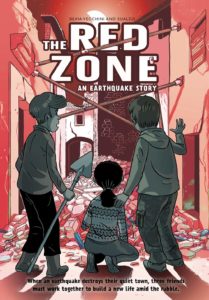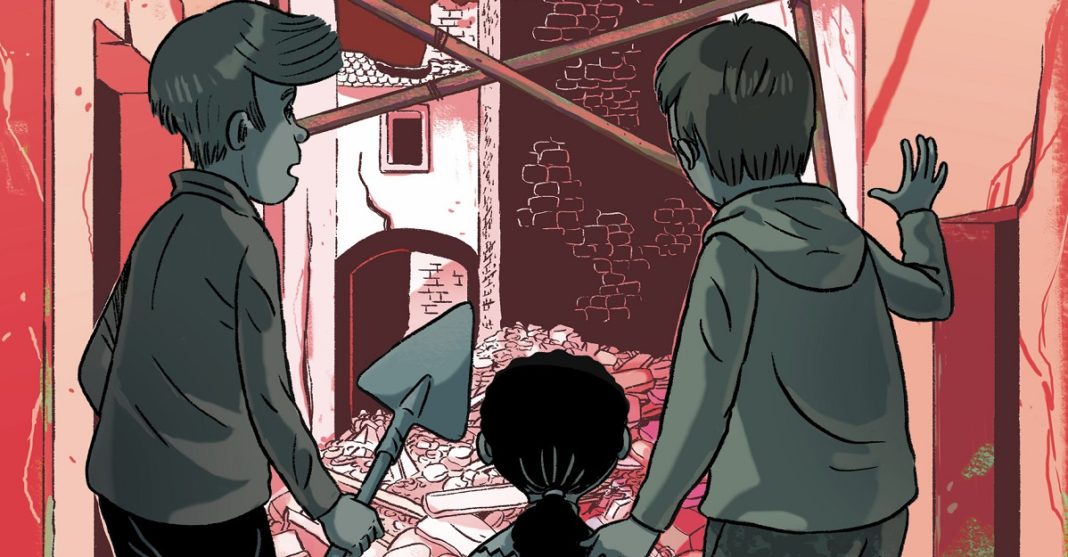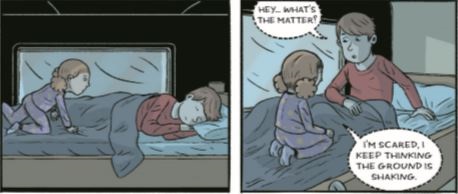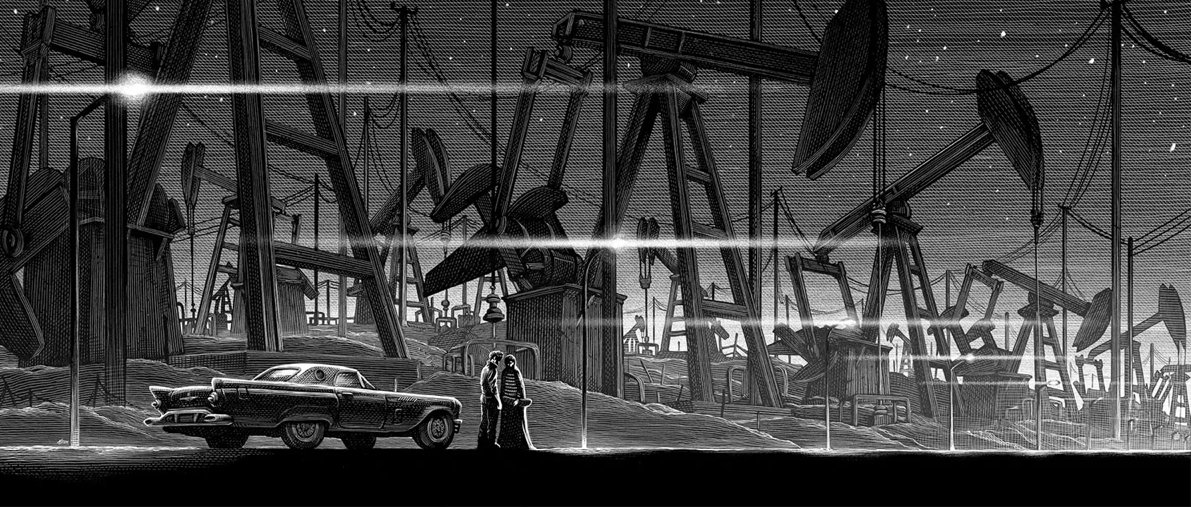
The Red Zone: An Earthquake Story
Written and Illustrated by Silva Vecchini and Sualzo
Colored by Claudi Giuliani
English translation by Anna Barton
Publisher: Abrams
In 2016, a series of earthquakes and aftershocks struck Italy that left the country’s central regions completely unrecognizable. Seemingly overnight, people picked up their entire lives and emigrated from their hometown, often the place their families had lived for decades, in order to start a new life. While Silva Vecchini herself was lucky enough to live in an area that was spared from the destruction, her experience assisting survivors and listening to other people’s touching journeys inspired her to create The Red Zone: An Earthquake Story alongside collaborator Sualzo as a resource for kids struggling with similar hopeless feelings around the world.
The Red Zone, named after a portion of a city that is deemed uninhabitable and unsafe for individuals, primarily follows a young boy named Matteo as he struggles to adjust to a new reality after an Earthquake leaves his village in ruins. Illustrated beautifully by Vecchini and Sualzo, the town’s overwhelming amount of rubble is a point of constant sorrow and contestation for the remaining inhabitants. While life goes on for the students who return to school and the adults who slowly resume working, there’s a steady sense of apprehension hanging in the air as everyone endures their new day-to-day lives.
Shaken by the quick disappearance of feelings of comfort and safety, everyone is reminded on a daily basis of the destructive force that altered their life and many people struggle with a new sense of vulnerability. These feelings of longing for a simpler, safer time or fear associated with the hard work it takes to rebuild one’s life after a tragedy, are extremely universal, and both creators do a wonderful job at showcasing how anxiety transforms each character.
Part of why The Red Zone feels like such an effective story is its reliance on showing what the characters are going through or feeling rather than dictating it to the audience. The comic methodically shows the audience what certain characters were doing during the Earthquake, brilliantly visualized through a series of motion lines to give the illusion of a person or object shaking, instead of having each character announce to his colleagues where they were during the quake.
Some of the more troublesome character arcs examined in the book are alluded to through changing body language and pained expressions, a nice hint that something is eating at a character before they act in a random or chaotic way. While a lot of people do opt to leave the town and start their lives over in another part of Italy, the fear and sense of unease felt throughout the town is present on everyone’s faces at different times, a constant reminder that no matter how much progress is made a quiet sense of anxiety persists in the disrupted town.
Due to the story’s heavy subject matter, it’s easy to momentarily forget that the core cast is made up of children. Throughout the story, Vecchini and Sualzo carefully showcase how the random destruction slowly impacts and potentially disturbs each child. While some kids frolic in the middle of winter and have a snowball fight, others turn inward, deciding to kick a soccer ball against a wall or picking up smoking instead of opening up to others. Conversations about school crushes and homework have been replaced with uneasy discussions of shoddy living situations and a silent understanding that some kids, especially the ones still alive, are luckier than others.
Claudia Guiliani’s beautiful colors add a whole other layer to the book’s emotional impact. Her use of black in particular as a background color is a powerful tool that helps compound the feelings of loneliness and isolation many characters are feeling in this changed world. During the winter portion of the book, the use of white, a shade that normally makes things appear clean and bright, simply mutes the city’s destruction. In fact, so much of the snow appears closer to a bright gray than a pure white that it seemingly becomes another layer of filth in everyone’s surroundings instead of a cleansing presence.
Despite the brief 133 page count, The Red Zone succeeds at telling a timeless, touching story. As the intensity of climate change picks up and more families will be forced to relocate as a result of environmental catastrophe every year, the examination of empathy and feelings of powerlessness throughout the book are becoming more indispensable. In spite of the book’s rather dour core, The Red Zone is a heartwarming drama that reminds readers to appreciate the typical, routine moments that make up our day-to-day lives because we never know when everything will be thrown out of whack.
Even in the face of life-changing catastrophe, Vecchini wants people to remember that small, intimate moments still have the power to bring us comfort during times of extreme darkness. Just because something is scratched or scarred, that doesn’t mean it can’t be fixed or made whole again, and The Red Zone reminds us that this lesson applies especially to people.











Comments are closed.